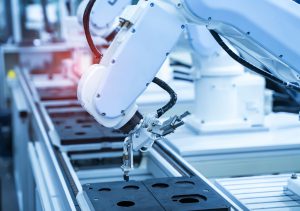As AI progresses rapidly and becomes more pervasive in society, there is growing interest in the impact of AI on the labor market. Previous research have defined the work (=task) required for each occupation and analyzed which occupations are particularly susceptible to the impact of the spread of AI by analyzing how easily the introduction of AI can replace each task. These studies have revealed that high-income and high-skilled occupations are more strongly affected by the spread of AI. Contrary to the conventional research result that technologies such as IT and robots have replaced tasks in low-income and low-skilled occupations, lowering wages in those occupations and widening the wage gap between occupations, these results have shown that the spread of AI reduces the wage gap between occupations.
However, even among workers in the same occupation, there are large skill gaps and accompanying wage gaps. Therefore, it is necessary to clarify how the introduction of AI among workers in the same occupation differs depending on the skill level in order to clarify the full picture of the impact of the introduction of AI on wage disparity in the entire labor market. Although such research has been awaited, no such studies have been conducted so far, partly because fine-grained microdata on how individual workers use AI has not been available.
In this study, we analyzed how the use of AI impacts the productivity of individual workers using detailed data on taxi drivers. In particular, we focused on how the impact of AI use on productivity varies depending on the skill level of workers. The subject of analysis in this study is an AI technology called “AI Navi” developed by Mobility Technologies that guides taxi drivers to areas where there is a high probability that there will be passengers. This AI technology uses machine learning to perform demand forecasting in the future from past demand patterns and can be considered a typical demand forecasting AI that is widely applied in the practical world. We used the length of cruising time (=time when taxis do not carry passengers) as an indicator of productivity. This is because cruising time accounts for a considerable proportion of the total working hours of taxi drivers, and the reduction in cruising time is likely to lead to an improvement in the productivity of taxi drivers.
A research team from the University of Tokyo and Simon Fraser University analyzed anonymized microdata of each driver’s cruising driving history provided by Mobility Technologies. The results of the analysis of this highly granular data clarified that turning on “AI Navi” shortens the cruising time by about 5% on average. In addition, the skill level of each driver was defined using the cruising history information before the introduction of “AI Navi” and analyzed whether the effect of “AI Navi” differs depending on the skill level of each driver. The results have shown that the reduction in cruising time is more significant for low-skilled drivers (approximately 7% reduction), with limited impact on high-skilled drivers. This indicates that the introduction of AI technology contributes to the improvement of the productivity of low-skilled workers.
These findings suggest that the spread of AI can reduce wage disparity across the labor market. Existing research results have shown that the spread of AI reduces the wage gap between occupations, and the results of this study show that the spread of AI also reduces wage disparities within the same occupation. Combining the results of our analysis within the “same occupation” with the results of existing research “across occupations,” it is suggested that the spread of AI may narrow the wage gap in the entire labor market. The results of this study are limited to taxi drivers, but considering that this is the result of demand forecasting, which is a highly generalizable AI technology, it is conceivable that similar results may be obtained in other occupations as well. The results of similar studies in other occupations are awaited for confirming whether this prediction is correct.









